Balancing energy demand and supply is a constant challenge for utilities, with weather being a key driver of consumption. Even small temperature shifts can trigger sharp changes in demand, making forecasting both complex and critical. Traditional methods often fall short in capturing this variability, leaving providers reactive rather than prepared.
Oracle Analytics Cloud (OAC) combines advanced analytics, AI, and machine learning to deliver accurate forecasts, reveal hidden patterns, and help energy providers plan with confidence. This article explores how utilities can leverage these capabilities to make smarter and more proactive energy generation decisions.
Energy Consumption at a Glance
Energy usage closely follows weather patterns. With OAC, utilities can analyze temperature, humidity, and wind against consumption trends. Line charts with bands show seasonal peaks, box plots highlight patterns, and gauge charts reveal sharp holiday versus working day shifts. These visual insights make it easier to understand demand and lay a clear foundation for accurate forecasting.
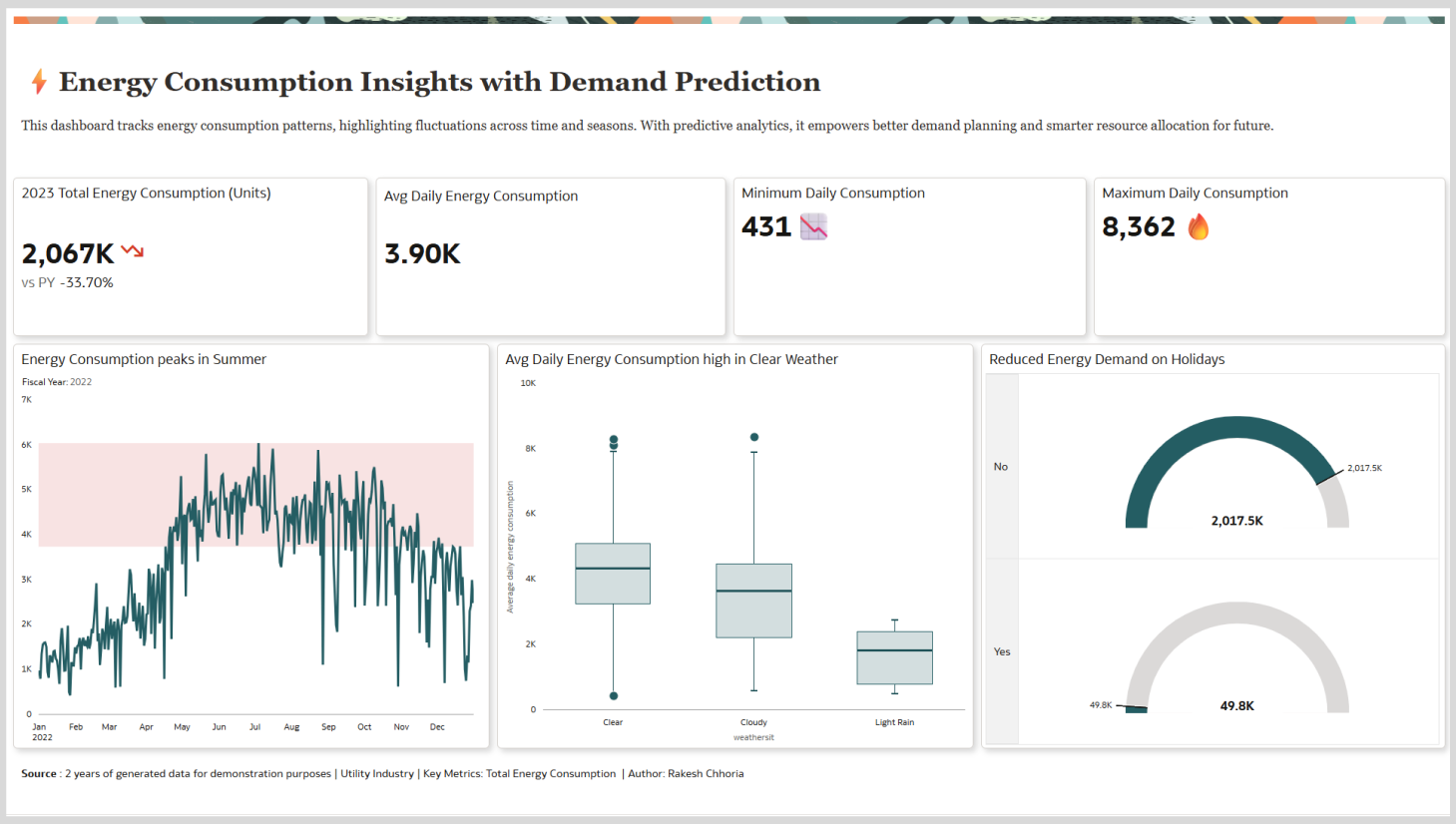
Visualizing Daily Consumption Patterns
Understanding day-to-day demand is key for operational efficiency. Calendar heatmaps color code usage from low to high, while fluctuation tables flag spikes and dips. These visuals allow utilities to quickly spot anomalies, recognize peak periods, and zoom in on patterns that might otherwise go unnoticed.
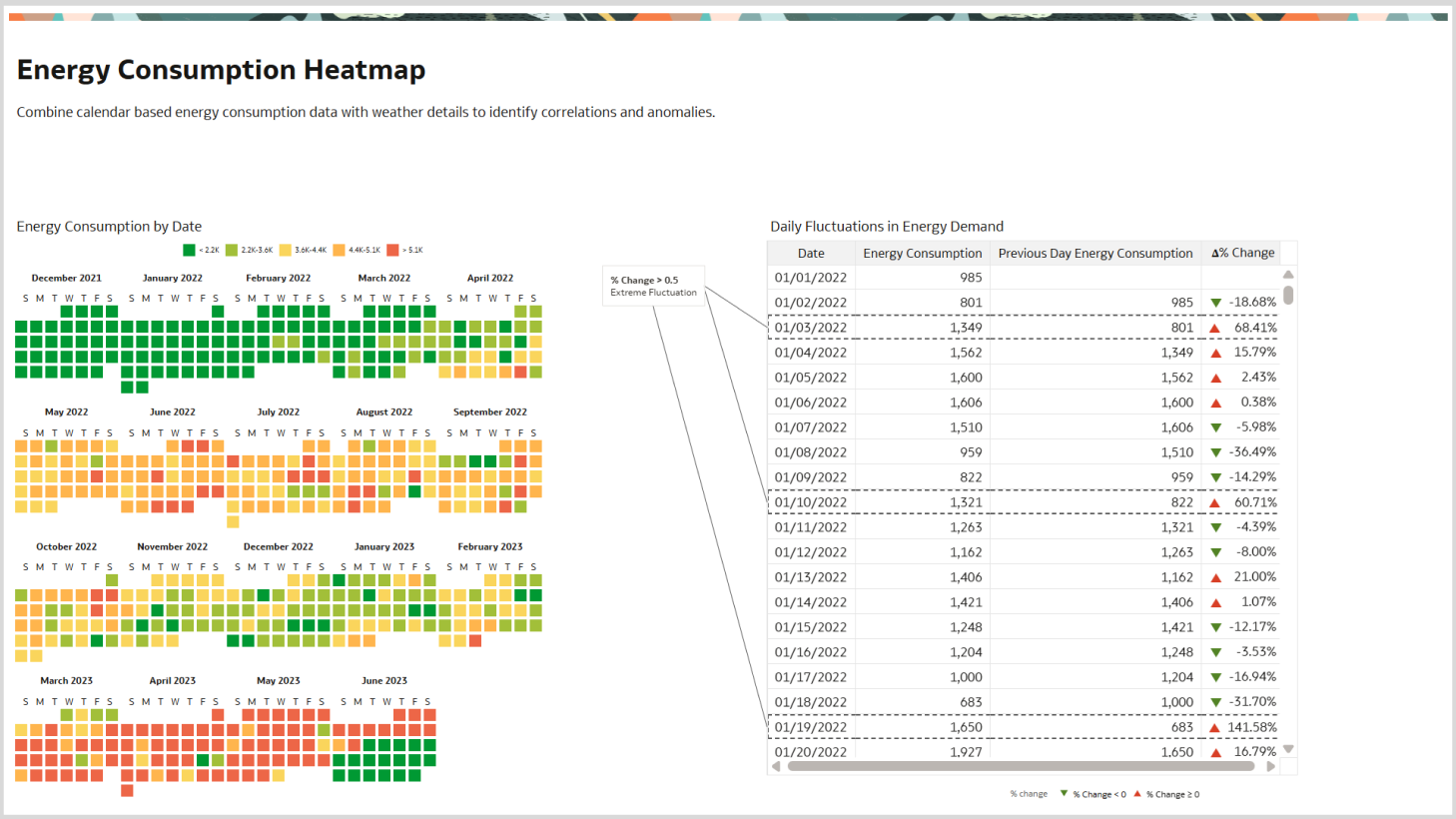
Uncovering Weather Driven Correlations
Not all-weather factors influence demand equally. Correlation analysis helps uncover patterns for example, temperature is a strong driver of consumption, wind shows a modest negative effect, and humidity often plays only a minor role. By focusing on the true drivers, utilities can sharpen forecasts, prioritize the right actions, and reduce planning uncertainty.
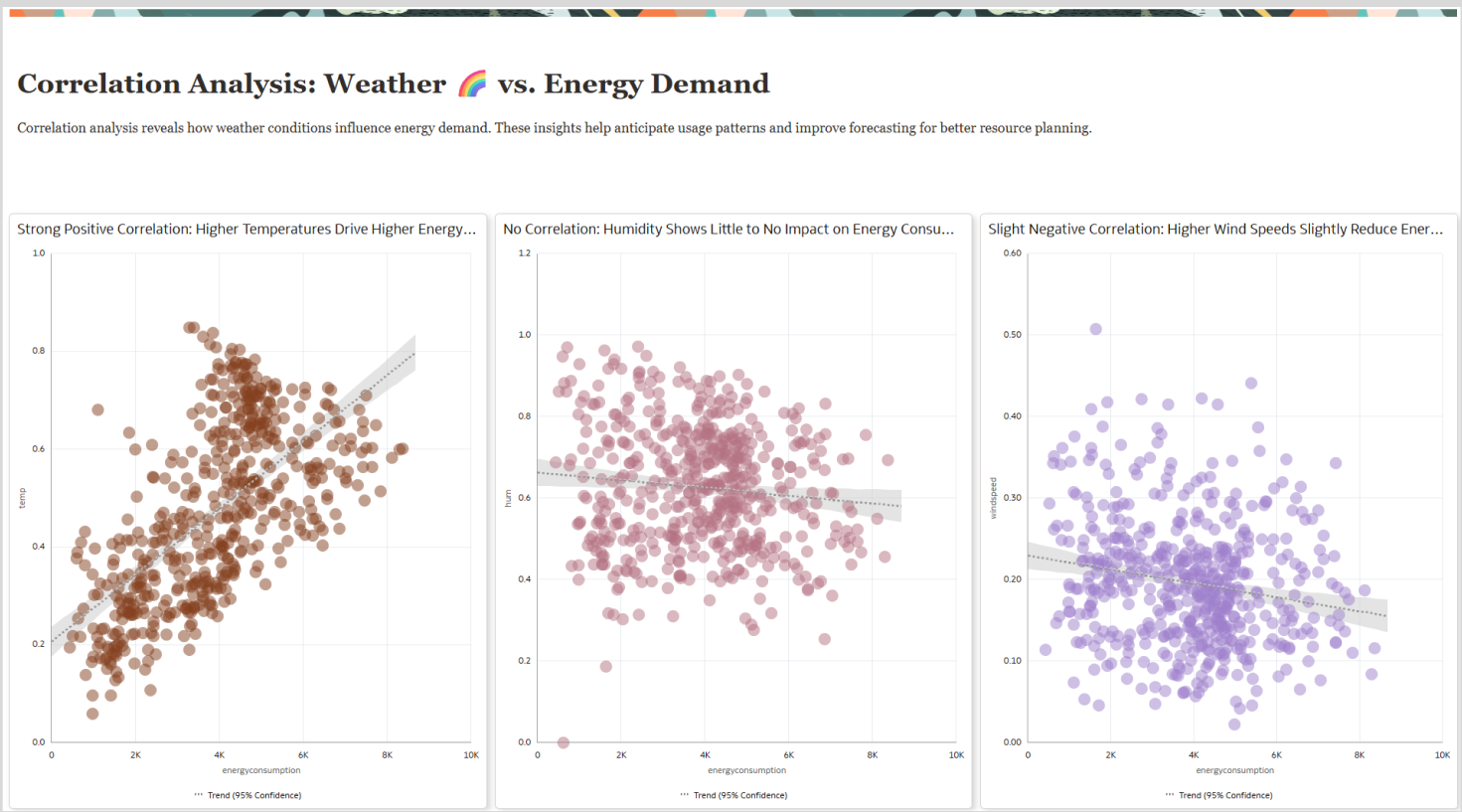
Smarter Forecasts with ML-Driven Scenario Planning
Traditional forecasting alone cannot keep up with volatile patterns. With OAC’s AutoML, utilities can not only predict demand from weather data but also instantly create multiple what-if scenarios. This flexibility allows providers to prepare for a range of outcomes, not just a single forecast.
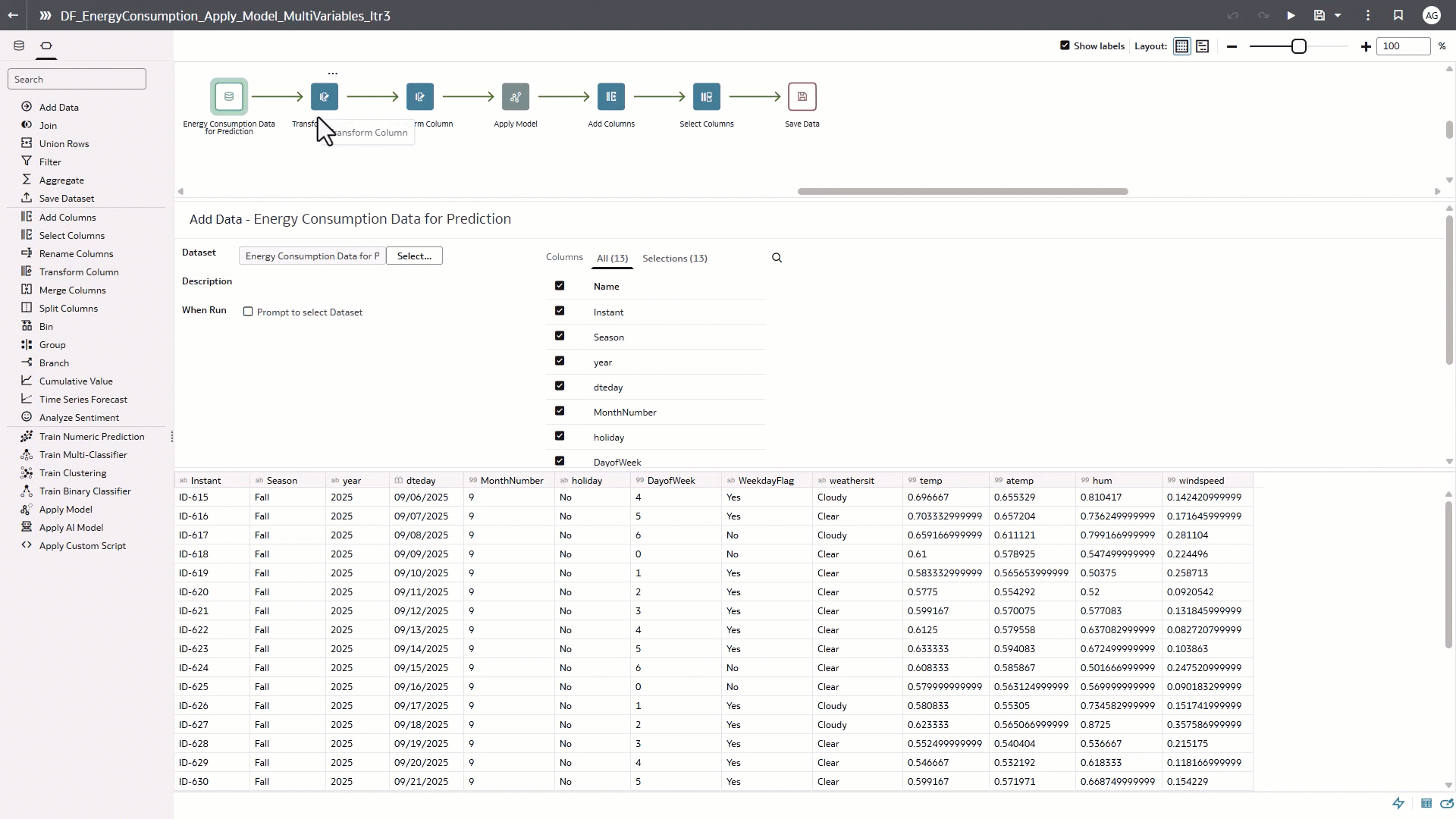
Conversational AI that Puts Insights at Your Fingertips
OAC’s built-in Assistant democratizes analytics by allowing users to ask questions in plain language, such as:
- What is the predicted energy consumption for today?
- Show me weekly demand forecasts for December 2025.
- Group by day and display in a table.
This natural interaction makes forecasting accessible to non-technical teams, improving collaboration and responsiveness.
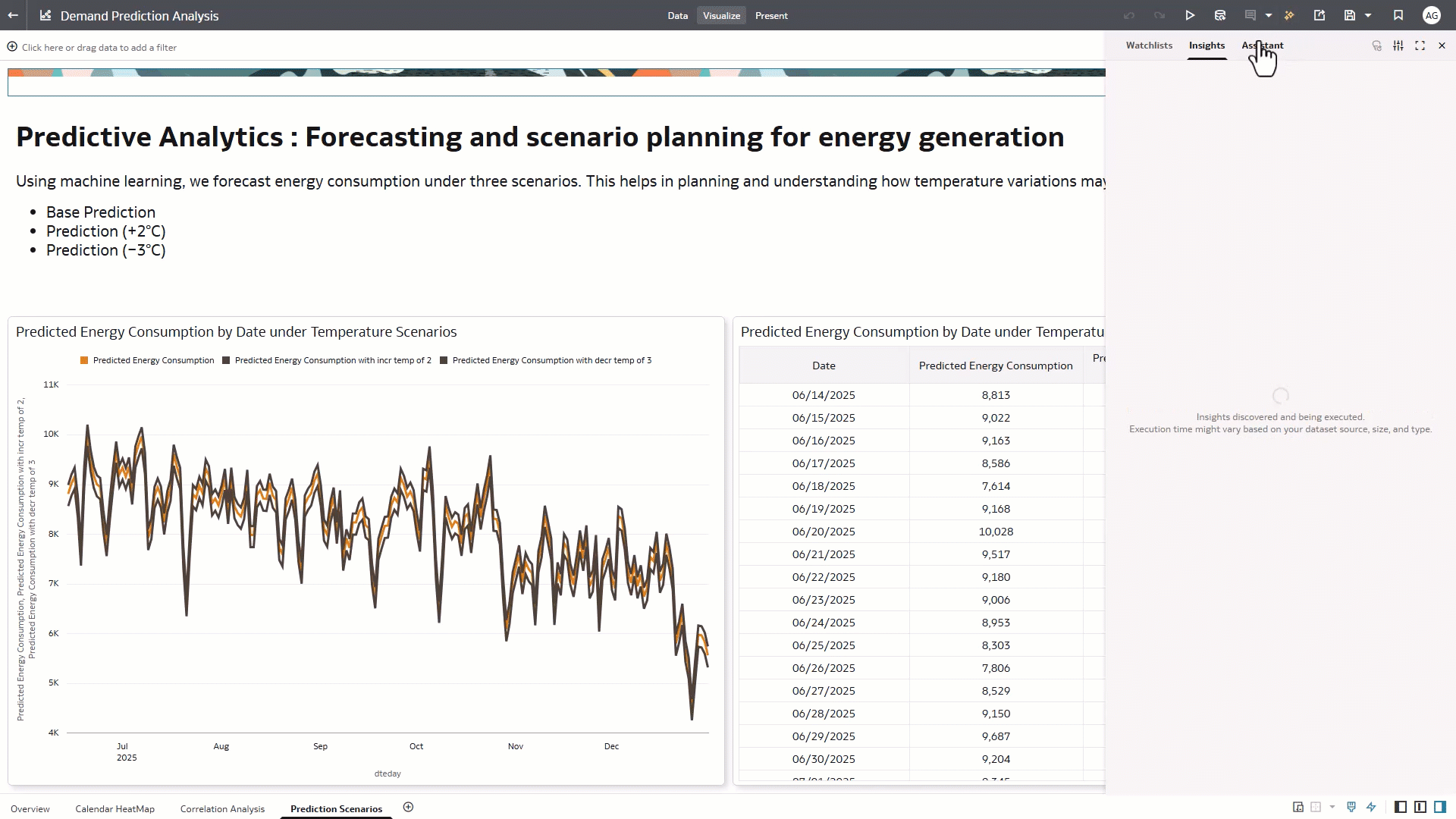
Distinguishing Features of Oracle Analytics
Oracle Analytics stands apart for utilities through:
- AI and ML models that deliver higher forecast accuracy.
- Augmented analytics that automatically surface anomalies and correlations.
- Natural language querying for accessible insights.
- Scenario planning to test multiple “what if” situations.
- Unified data foundation blending weather, consumption, and operations in one platform.
Conclusion: Building a Resilient Energy Future with AI
Utilities are entering an era where data intelligence drives reliability and resilience. By leveraging AI, ML, and cloud-powered analytics, utilities can shift from reactive adjustments to proactive energy planning. With Oracle Analytics, utilities can anticipate surges with confidence, optimize supply to reduce costs, and deliver reliable service in a changing environment. The time to act is now. See how Oracle Analytics can help utilities unlock smarter insights, improve operational decisions, and strengthen energy resilience.
Check out these resources to further explore Oracle Analytics capabilities:
- AI Assistant
- Natural Language Queries
- Contextual Insights
- Data Blending and Preparation
- Design Models using AutoML in Oracle Analytics
Join the discussion on the Oracle Analytics Community.
Learn more about Oracle Analytics on the product page and in Oracle Help Center.
